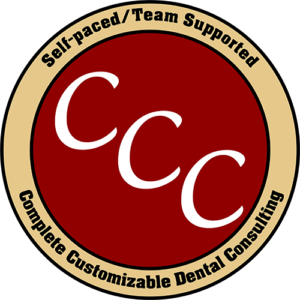Let’s Talk About Crown & Bridge
Over the last 30 years, I have observed that many, many, practices mis-code crown & bridge procedures, so let me share with you some tips I have learned.
First, there are three common classifications of metals for crowns and bridges.
High Noble D2790 has at least 40% gold content. Noble D2792 has at least 25% gold content and Predominantly Base Metal D2791 has less than 25% gold content. Most plan benefits allow for Noble Metal, but check with each plan for specifics.
It is important to talk with your lab to clarify what types of metals your lab is using in order to bill properly.
If your lab is using high noble, you will be paying higher lab fees, therefore you should treatment plan, document, and bill accordingly. Keep in mind that in most circumstances, the patient will have a higher co- pay due to the upgrade in metals, so make sure to factor that into the patient’s estimate.
If the dentist bills for high noble and the patient is receiving a noble metal crown, or, if you are billing for noble metal and your lab uses base metal, the patient isn’t actually getting what they are billed for. It can then be considered insurance fraud, even if unintentional, so you need to be very careful in this area.
Let’s look at this actual case:
6-11 bridge pre – auth was sent for D6240 Pontic Porc to High Noble & D6750 Abutment High Noble. The plan re-assigned the codes & approved for D6241 Pontic Porc to Base Metal & D6751 Abut Porc to Base Metal
When the pre auth came back, NO ONE noticed that the codes were re-assigned to a lesser benefit OR that even though it was “approved” the patient was well over his max. NO ONE advised the patient what his financial responsibility would be.
Treatment done…NO consent form, NO financial arrangements. NO ONE noticed (or spoke up) that the patient and the Dr. changed the treatment plan in the chair to an all ceramic bridge. The pre auth was dated & sent for payment. The insurance paid the claim and the patient later received a bill from the office for several thousand dollars on top of his estimate that he already paid.
What do you think happened next? The patient filed a grievance with his insurance company and the dental board for fraud. The Dr. was held responsible. The insurance company performed an audit and the Dr. was ordered to re-imburse the insurance company and the patient. That patient got a high end, all ceramic, beautiful 6 unit bridge for free.
That was a pretty pricy error. Let’s take a look at some things that could have been done to avoid this.
- Have a dedicated person (and a backup person) that is in charge of following up on pre-authorizations. They must read them carefully and understand them completely. They must call or see the patient to thoroughly explain the patient’s benefit, and make financial arrangements. It is crucial that this conversation take place before the appointment date. This gives the patient a chance to arrange financing, or if they need to reschedule, gives you time to fill that 3 hour gap in the schedule.
- What role did the chairside play? The consent form must be signed after the patient and the dentist have reviewed the case. The case should have been discussed in the morning huddle, so if the treatment plan is different from what was done today, that should be apparent and the assistant should have brought it to the immediate attention of the insurance coordinator.
- Who is entering the treatment? Is there a policy or procedure in place that ensures everything matches and correct codes are put on final claim?
It is crucial that the narratives are complete, conversations are documented, and all treatment verified against the treatment plan. This will make a smoother and more profitable day, happier patients, and will reduce your risk of audits, grievances, and possible legal action.
